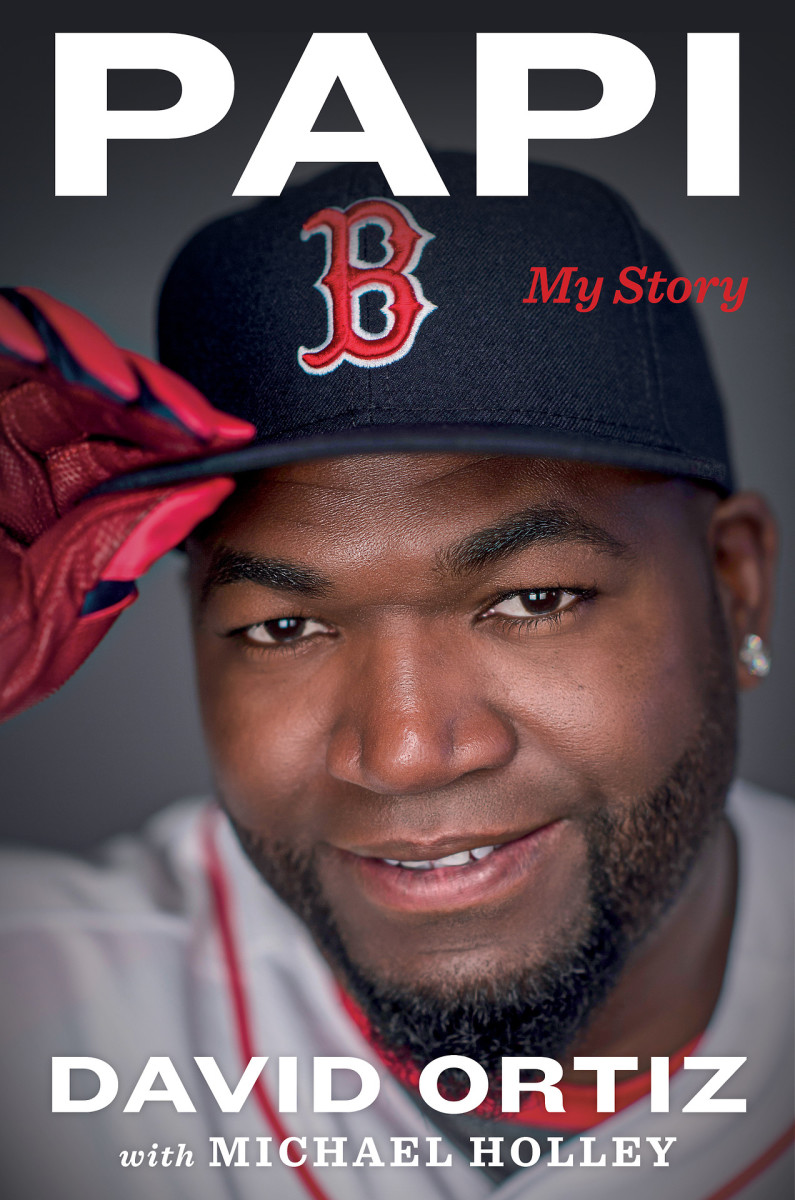In new book, David Ortiz sounds off on the Twins, the Red Sox and his ex-manager

The best athlete memoirs answer the questions writers and fans asked fruitlessly throughout a player’s career. As you might expect, longtime Red Sox designated hitter David Ortiz’s Papi: My Story (co-written with Michael Holley) settles some real stumpers.
Who was the best player he ever saw? J.D. Drew. No, really. “When J.D. wanted to play, he was the best player I’ve ever seen. No b.s. Listen, I said, when he wanted to play, he was the best. … Some days I wanted to kill him… he would come out of the game because his left nut was hurting. It made no sense sometimes, but that’s how he was.”
What was Manny Ramirez really like? A relentless worker and a masterful hitter who taught Ortiz more than anyone else—“the best [batting coach] I’ve ever had”—but did on occasion forget that the two of them had made lunch plans.
Did he want to punch manager Bobby Valentine? Yes. Duh. In fact, basically every member of the doomed 2012 Red Sox did. “He is a bad person,” writes Ortiz. (OK, so not all the answers will be surprises.)
Another characteristic of superior athlete tell-alls is the presence of a large chip on the memoirist’s shoulder. These days stars in the major sports lead remarkably charmed lives, building fortunes by way of the supreme marketability of the particular fine motor skills they’ve happened to acquire. Some players look at their humble beginnings and then at their millions, and it makes them overlook past slights.
The Papi Papers: How David Ortiz endured the most difficult year of his career
Not so, blessedly, for Ortiz! He comes first for Tom Kelly, his first manager in Minnesota. “I know he’s recognized as a good baseball man, but he struck me as a guy who believed his players were dumb f****s… There was a game where Kelly thought the team was too sloppy, so he ordered the players onto the field after the game. Come on. It’s major league baseball. I’d never seen anyone do that before, and I haven’t seen anyone do it since.” Ortiz blames Kelly also for his light-hitting early seasons, saying that the manager favored slap hitters because of the Metrodome’s turf. “So I kissed his ass for a couple of years and became the biggest slap hitter you’ll ever see,” writes the 6' 3", 230-pound Ortiz.
His problems in Minnesota, though, continued even after Kelly’s departure. After the 2002 season, the Twins released Ortiz so they could pick up a shortstop in the Rule 5 draft, Jose Morban. (Minnesota wound up waiving him before the season began.) Ortiz had just gotten married. “I feel like they f****d me. That’s the best way I can describe it. I was released on December 16, exactly one month after my wedding. Who gets released then? … I thought it was a trashy way to do business, and I couldn’t help thinking they’d done it on purpose.”

Ortiz famously fared much better after leaving the Twins, upping his slugging percentage by nearly 100 points in his first season in Boston. Steroid whispers followed, but Ortiz said he had never taken performance-enhancing drugs and had been frequently tested. He said he supported stiff penalties for those who did take them.
In 2009, though, the New York Times reported that Ortiz had been among the players who tested positive for PEDs during a round of preliminary and ostensibly anonymous tests in spring training 2003. As Ortiz tells it, his own defense was drowned out by noisy censures from the Red Sox press corps. Its leading lights rushed to call him a fraud. “Say you didn’t do it enough and you sound guilty. Say nothing and your silence proves your guilt. … It was a horror movie.” Because he was tarnished personally by the Times report, Ortiz doesn’t make the mistake so many of the era’s chroniclers do. What mattered more than the names on the list, he points out, was the sordid motivation of whoever leaked it.
Manny Machado, Kris Bryant, Bryce Harper among the faces of every MLB franchise
With the Red Sox, Ortiz had an all-time great run—he was the only player or coach present for all three of the team's 21st-century championships—but he airs gripes about the franchise too. He grumbles about the team’s lowball initial offer following his All-Star season in 2010 (two years, $16 million). “When you consider everything,” he writes, “I was the most underpaid player the organization ever had. … They’d overpay players and then hope they could adjust to Boston. They’d underpay me, knowing that there was nothing about playing in Boston that I couldn’t handle.” He saw a similar quality in lefty starter Jon Lester, and laments that the team declined to sign Lester long-term and traded him away weeks before throwing more than $70 million at Cuban prospect Rusney Castillo. “They never seemed to get how stupid these moves looked to veteran players… They had just traded away one of the best big-game pitchers, a pitcher the Red Sox developed, all because they didn’t want to pay him what he deserved.”
Ortiz was paid $16 million for his last season, 2016, a year in which he led the American League in OPS despite being 40 years old. He will be fondly remembered for going out on top. Whether he will be enshrined in Cooperstown five years from now is another question entirely—despite his postseason heroics, 541 career homers (17th all-time) and 632 doubles (10th all-time), no Hall of Fame candidacy has survived such aggressive PED rumors and so much time spent as a designated hitter.
If he gets in, great. If he gets held out, well, I, for one, can’t wait to read what he’ll have to say about that.
